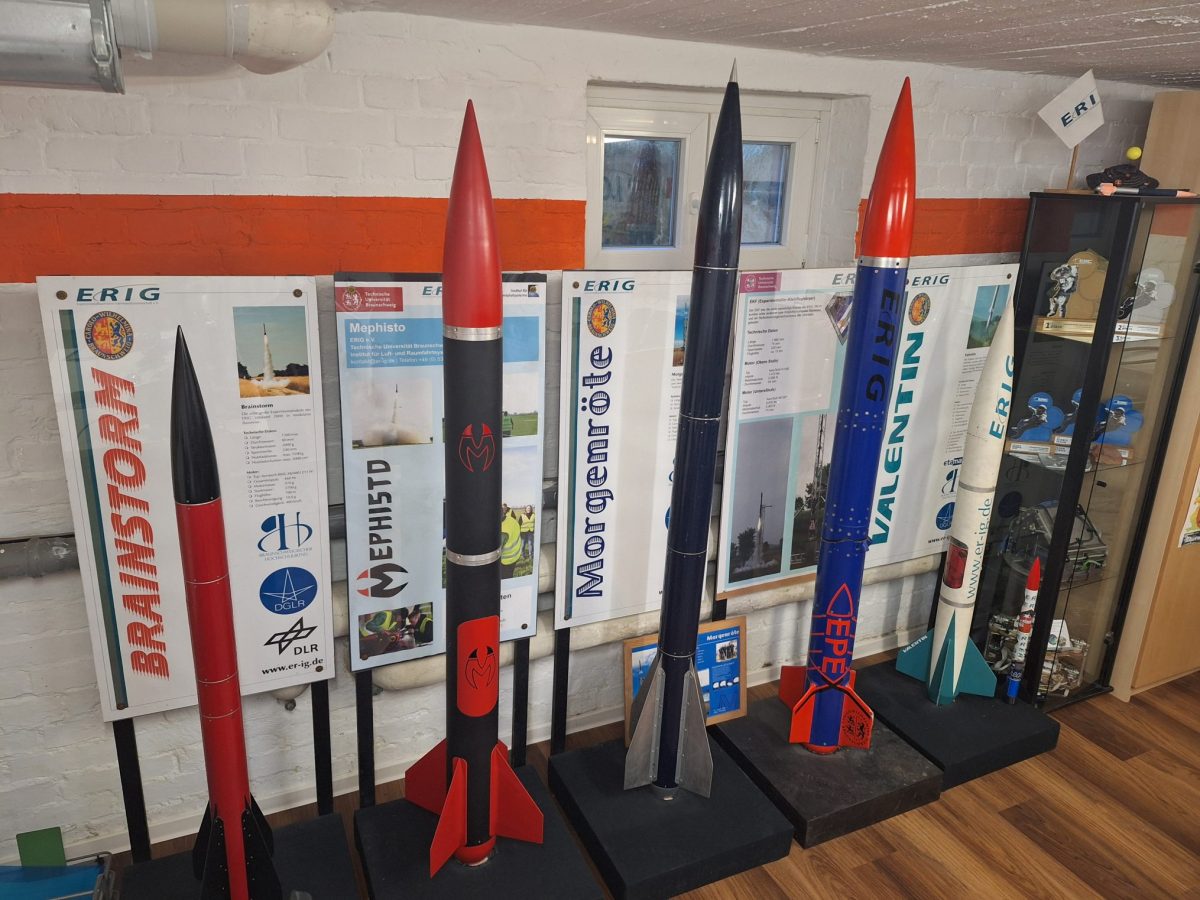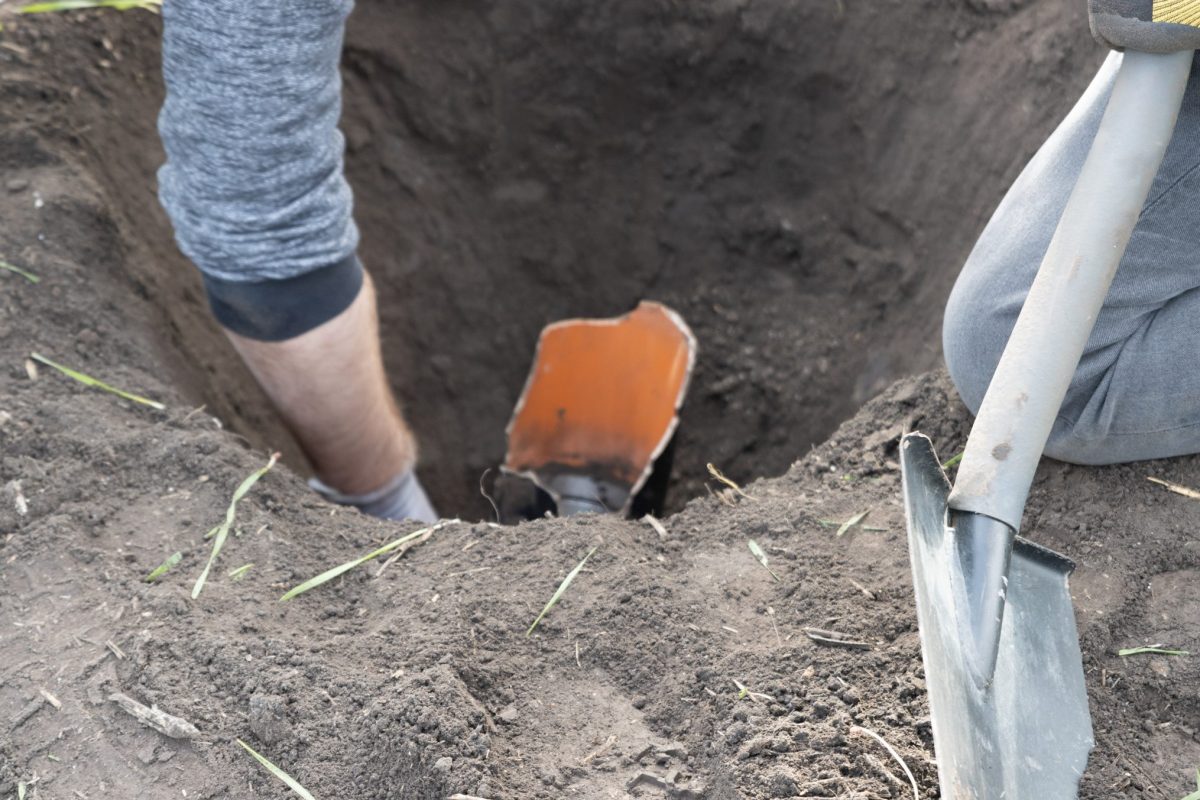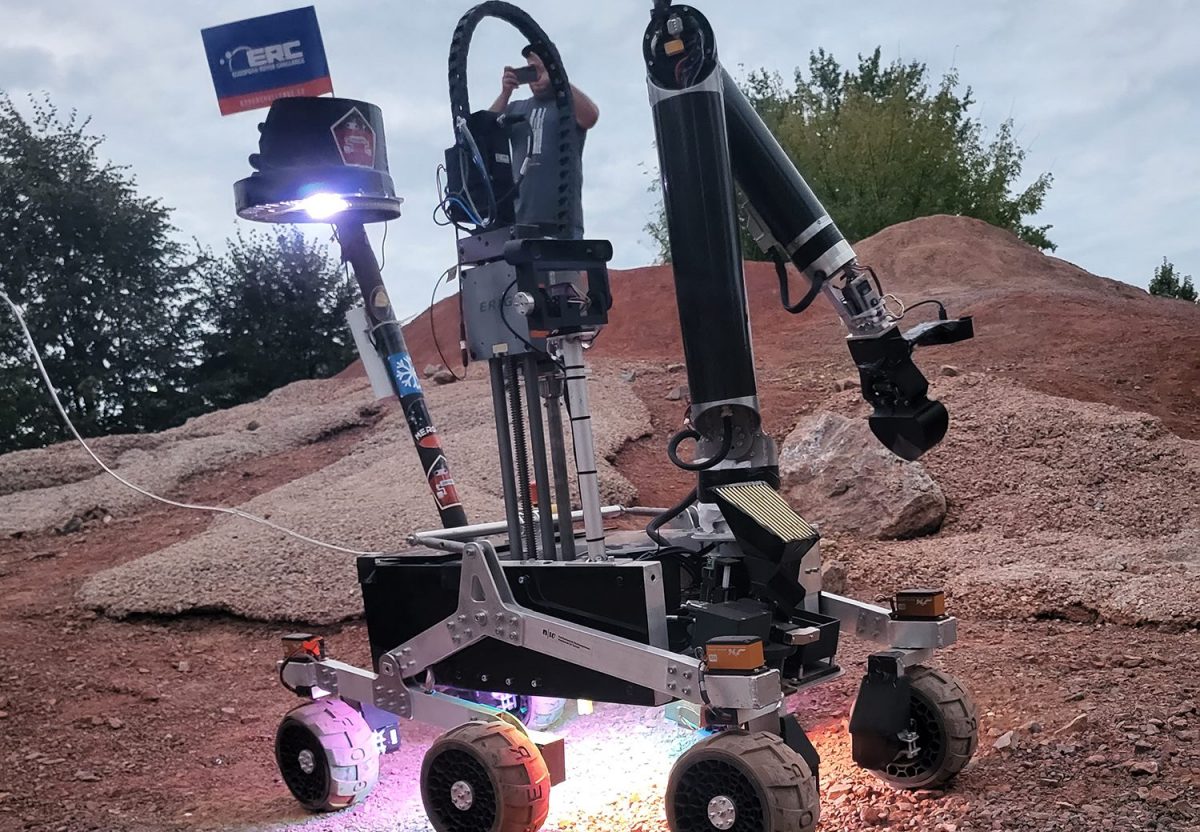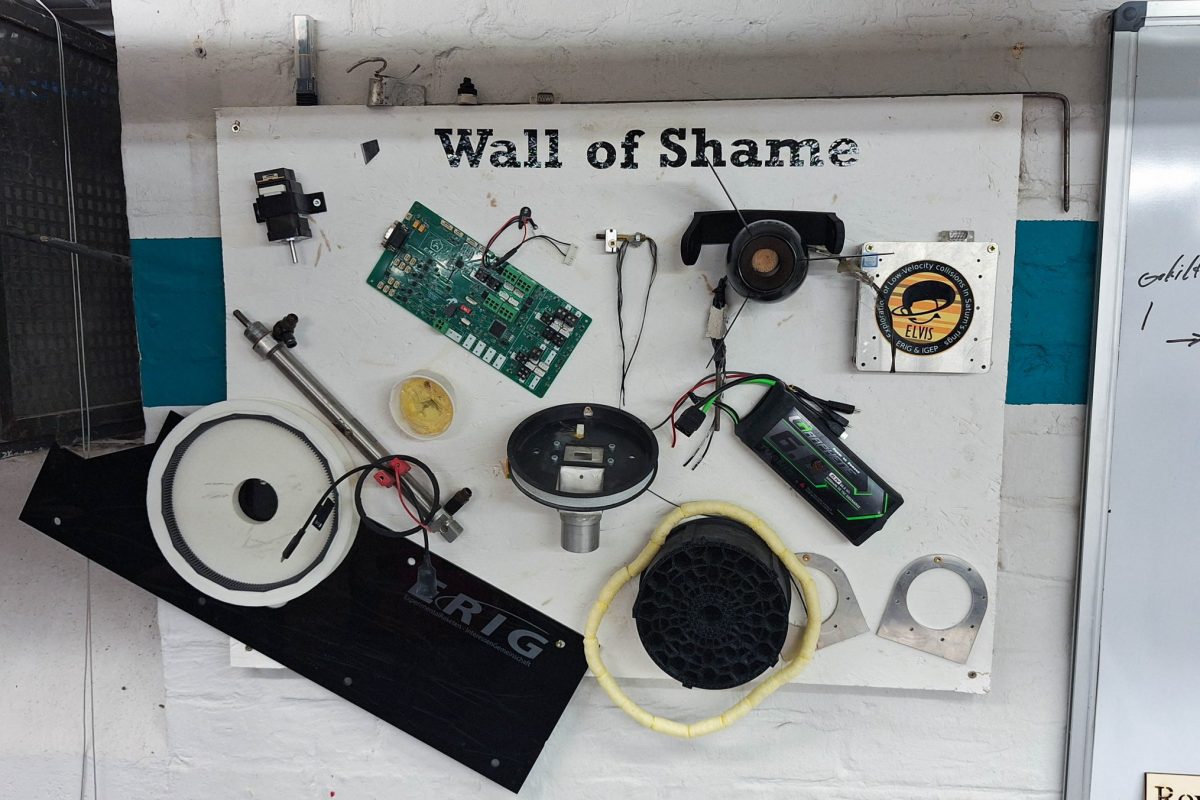The fascination of space: from the lecture theatre into space Student initiative ERIG e.V. builds rockets and high-altitude research experiments for space travel
Infinite vastness, orbiting planets, weightlessness: space has always fascinated mankind and is the basis of numerous films, books and myths. The student initiative ERIG e.V. (ExperimentalRaumfahrt-InteressenGemeinschaft) offers students and lecturers at the Technische Universität Braunschweig the opportunity to build rockets, develop small satellites and construct rover demonstrators for the exploration of foreign planets on their own initiative, thus getting to the bottom of the fascination of space travel.
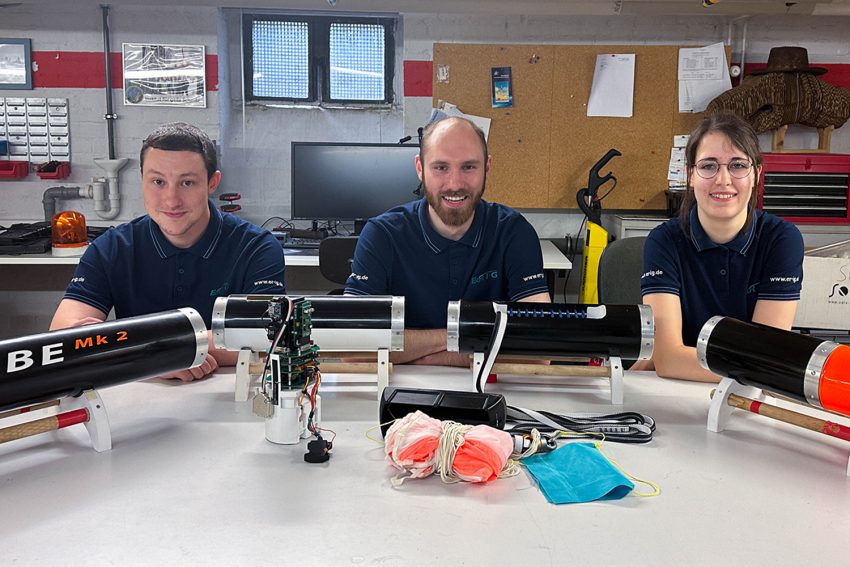
Alexander Lambrecht, Moritz Förster and Hanna Gottwald are part of the student association ERIG e.V. Picture Credit: ERIG e.V./TU Braunschweig
The bunker-like basement rooms of the Institute of Space Systems at Hermann-Blenk-Straße 23 at the Braunschweig Research Airport look a bit like a secret laboratory. All kinds of rockets hang and stand on the bare walls, between neon tubes and concrete floors. Each one tells its own story. There is the “FAUST” model, a hybrid rocket that flew almost six kilometres at the speed of sound. Or “Rhea”, which lost its nose cone and parachute during take-off due to an electronic problem, but still managed to break a speed record. Leaning against the entrance is a particularly large example, a hot-water rocket from 1997, where it all began.
As impressive as the collection looks, none of these rockets belong to any major space agency, but were built by students from the ERIG e.V. student association. The aim of the initiative is to give students the opportunity to put the theoretical content of their aerospace courses into practice, to exchange ideas with like-minded space enthusiasts and to develop personally in the process. While some rockets are built by individual club members, the majority of rockets are built by teams divided into different sub-groups. One group builds the rocket motor, another the flight computers, another the parachute and another the rocket structure.
Everything is built in-house
A few rooms away, where lathes stand around and pipes and cables are stacked under neon lights, the individual parts are made. Adjacent to the main workshop is the laminating room, where the rocket tubes are made from carbon and glass fibres. The process is called vacuum infusion. “With the exception of special purchased parts such as cameras or special motors, ERIG builds everything itself,” says Moritz Förster, who has been involved in the association for two years.
The members of ERIG launch their rockets every six months. Rockets that fly up to 600 metres are launched in Germany. For larger rocket tests, the team travels to a military site in Poland, to Kiruna in northern Sweden or to competitions such as the European Rocketry Challenge in Portugal. “Sometimes the rocket launches fail,” says Förster. Then the rockets often have to be pulled out of the ground by several people. “We affectionately call this ‘spade recovery’.” The team came up with the name when they realised that a spade is one of the most important tools for recovering crashed rockets.
Various high-altitude research projects
But ERIG doesn’t just build rockets. In the largest of the basement rooms – amidst tables, sofas and candy cabinets – ERIG’s high-altitude research projects are developed, i.e. experimental projects that can be used in space. These include the small satellite project iLOOP, funded by the German Aerospace Centre (DLR). The aim of the project is to develop a 3D printer for space. In the future, this could be used to produce structures in space that would not survive transport from Earth to space or whose volume exceeds the payload of the rocket. At the beginning of July 2024, the students, in collaboration with the Institute of Space Systems, wrote a paper that will be presented at an ESA conference in the Netherlands in the autumn. “The chance to write your own, fully-funded paper during your studies, without the pressure of having to get everything right right away – you don’t get that in any internship or lecture, only at ERIG,” says Moritz Förster, for whom iLOOP is a project close to his heart.
Another successful project is DLR’s REXUS programme. The programme offers European students the unique opportunity to carry out a complete space project during their studies in just under 18 months and to gain insights into all aspects of a mission. ERIG participants successfully completed their third REXUS mission in March and are currently applying for the fourth.
With your own rover over an artificial Mars landscape
The ORTHOS rover, crowned by a small felt elk, is another eye-catcher in the High Altitude Research Experiments room. This is a do-it-yourself project that gives students the opportunity to experience the multidisciplinary field of robotics in practice by building a rover demonstrator and taking part in the European Rover Challenge (ERC). The ERC is an international competition held in Poland, where teams have to drive a rover across a replica of the Martian landscape while solving various tasks. The team has taken part three times, winning several sub-categories and even taking the overall win in 2020. The members of this sub-group are currently working to further improve the rover for this year’s challenge in September.
All disciplines welcome
The back of the large room is cosy with sofas. There is plenty of space to socialise and spend time with other members. The 25 or so members also meet every Tuesday evening at 6pm for a working meeting in the adjacent meeting room. This is where club business is discussed, expenses are agreed and new faces are welcomed. Anyone who wants to join is welcome to come along, says Moritz Förster. ERIG is open to students and lecturers of all disciplines and semesters. No previous experience is required, just an interest in and enthusiasm for space travel.
Collected fragments
Hanging from a white plywood panel on one of the brick walls next to the sofas is a hodgepodge of sheet metal. “Wall of Shame” is written above it in large black letters. They are collected fragments, mostly from the Rover. Parts that didn’t work. The wall symbolises something that defines ERIG: “That not everything has to work at once, that we can make mistakes and try things out,” says Moritz Förster. “It’s not the performance that comes first, but the joy of tinkering. It’s about putting theory into practice and sharing our enthusiasm for space travel.

